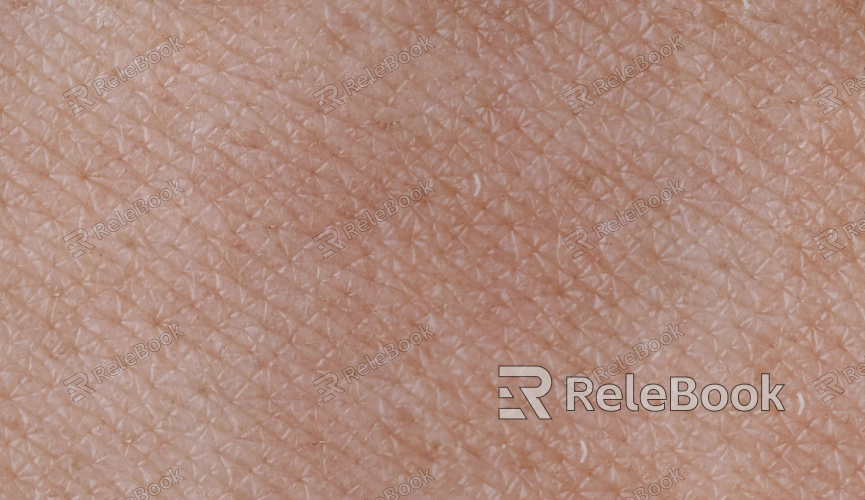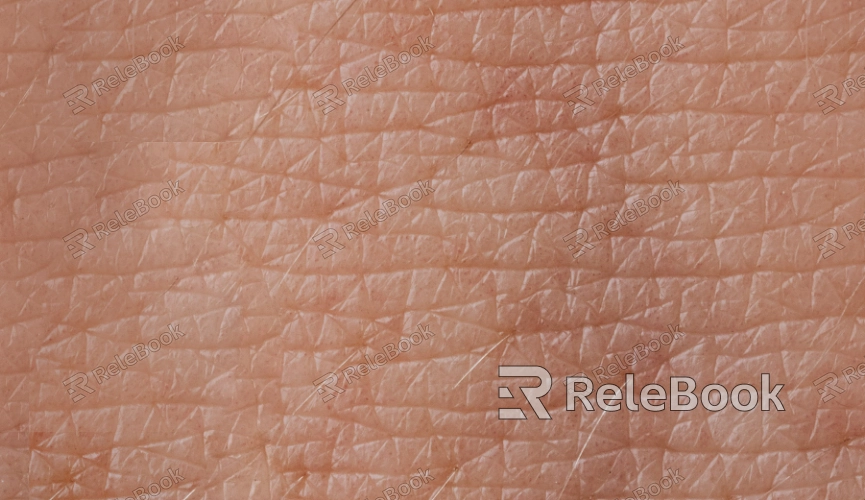How to Make a Seamless Skin Texture 3D Model
When creating realistic human or creature characters, the details and texture of the skin play a crucial role in achieving a convincing final result. To ensure the model's surface is smooth and lifelike, designers often need to create seamless skin textures to avoid noticeable seams and repetitive patterns, enhancing the realism and natural feel of the rendering. Seamless skin textures are widely used in various fields, including video games, film production, virtual reality, and character animation. Popular 3D modeling software like Blender, Maya, ZBrush, and Substance Painter can help designers create high-quality seamless skin textures. This article will introduce several common methods for creating seamless skin textures, helping you achieve more refined and realistic skin effects in your projects.

1. Understanding the Basics of Seamless Skin Textures
A seamless skin texture refers to a texture applied to a 3D model's surface that blends smoothly without any visible seams or repeated patterns. The key factors when creating a seamless skin texture are the continuity of the pattern and natural transitions. Skin details, especially in areas like the face, arms, and legs, must seamlessly connect to maintain consistency, enhancing the visual realism. Seamless skin textures are often used in high-quality character modeling, particularly in virtual characters, game characters, or animation characters, where any repetitive textures or artificial marks must be avoided.
When creating seamless skin textures, designers should pay attention to the following critical elements:
Texture Continuity: The edges of the texture must connect smoothly without showing obvious seams.
Realism of Skin Details: The details must be precise, ensuring consistency in tone, texture, and surface features.
2. Creating Seamless Skin Textures with Substance Painter
Substance Painter is a powerful 3D texture painting tool commonly used for skin texture creation. It not only allows precise detail work but also provides smart materials that help designers quickly generate natural-looking skin effects. Here’s how to create seamless skin textures using Substance Painter:
Import 3D Model: First, import your 3D model into Substance Painter. Ensure the UV unwrap is properly done to allow the texture to cover the model evenly.
Select Skin Materials: Substance Painter offers a rich library of skin smart materials, from which you can choose the most appropriate one for your project.
Paint Skin Details: Use the painting tools to manually adjust skin details, especially in high-detail areas like the face, neck, and arms. By layering and refining the details, you can eliminate seams and create a seamless transition.
Bake Textures: Using the baking feature, you can generate and apply skin texture details to the model’s surface, ensuring all the details are accurately represented and seamless.
Substance Painter provides powerful tools and a comprehensive material library, enabling designers to efficiently and accurately create seamless skin textures.
3. Creating Seamless Skin Textures in Blender
Blender, a free 3D modeling and rendering software, is also well-suited for creating seamless skin textures. With its robust texture painting tools, designers can quickly complete skin texture work. Here’s how to approach this in Blender:
UV Unwrapping: Start by ensuring your 3D model’s UV map is accurate. Use Blender’s "Unwrap" tool to lay out the model’s surface so the texture can be applied evenly.
Apply Skin Texture: Import the skin texture into Blender and adjust its scale and position to ensure the texture covers the surface seamlessly, avoiding visible seams.
Texture Painting: Blender’s "Texture Paint" feature allows you to carefully paint and fix texture seams, particularly in high-detail areas such as around the eyes, lips, and knuckles.
Detail Refinement: For skin details such as pores, wrinkles, and blemishes, you can adjust these features to enhance the realism and ensure smooth transitions across the entire texture.
Blender’s "Texture Paint" tool is highly flexible, making it ideal for fine-tuning skin details and fixing seamless texture issues on complex skin models.

4. Sculpting Skin Textures with ZBrush
ZBrush is another widely used tool for character modeling and sculpting, offering many detailed sculpting features ideal for creating high-precision skin textures. With ZBrush, you can sculpt intricate skin textures like pores and wrinkles, which can then be turned into seamless textures:
Sculpt Skin Details: Use ZBrush’s sculpting tools to add realistic skin texture details to your model’s surface.
UV Mapping: After sculpting, make sure your UV mapping is correct to avoid texture distortion.
Generate Textures: Use ZBrush’s "Polygroups" and "Projection Master" features to convert the sculpted details into a texture, which can then be exported for further texture painting.
ZBrush excels at creating detailed skin textures and is a powerful tool for sculpting realistic, seamless skin effects.
5. Paying Attention to Texture Resolution and Detail
Texture resolution and detail level are crucial when creating seamless skin textures. High-resolution textures offer more details, making the skin surface appear more realistic. Consistency in these details is also key—ensuring that the tone, texture, and surface features of the skin transition smoothly across different parts of the model without abrupt or disconnected areas.
6. Accessing High-Quality Texture Resources
If you need high-quality skin texture resources, Relebook offers a wide variety of textures to help you quickly find seamless skin textures that suit your project’s needs. Whether you’re looking for basic textures or complex detailed textures, Relebook has a rich library of resources that can enhance your rendering quality and design efficiency. Visit Relebook’s texture library today to explore more creative possibilities!
By following the methods outlined in this article, you can master the techniques for creating seamless skin textures. Whether you're painting skin details in Substance Painter, refining textures in Blender, or sculpting them in ZBrush, each step will help you create natural, smooth skin effects. Seamless skin textures are not only crucial for enhancing the realism and believability of your projects but are also an essential skill for any 3D designer to master.

